The Design Proposal
“Sustainable technologies must be combined with a philosophy of sustainability, a thorough understanding of how important the Earth is to us, resulting finally in a new architecture and a new visual language.“
Anne Taylor (2009, p. 364)
Shaping the Learning Landscape
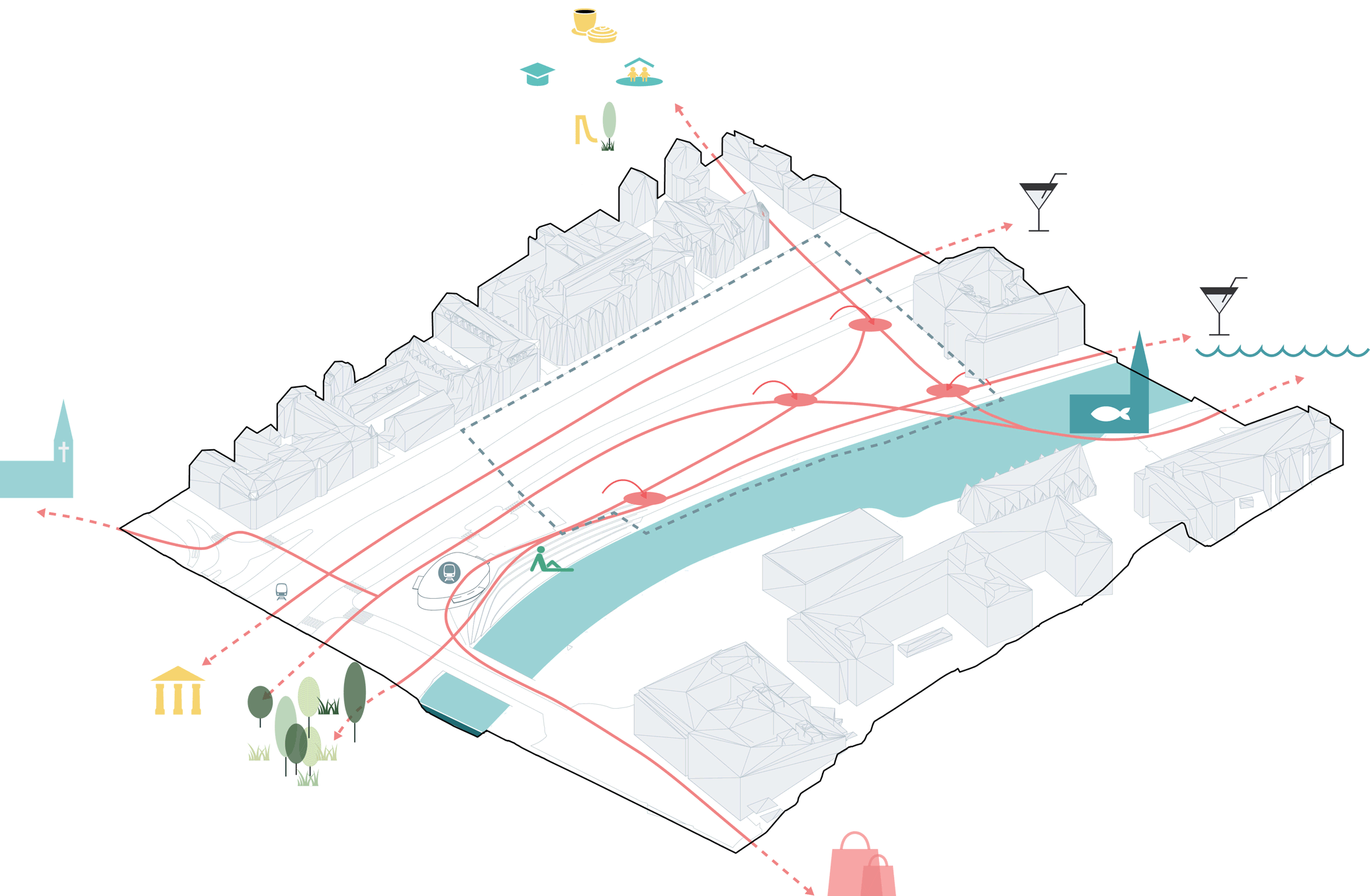
Flows and Urban Interrelations
The design proposal takes care of existing flows and aims to create new pedestrian streams by taking into account the specific site conditions and potential entry points for children, that are according to theory, important transition spaces for children.
Topography Development
The site is shaped according to existing and intended flows. It makes use of curves, as they represent nature and reflect the movements and shapes of living things, and thereby symbolises how water alters the environments and vice versa.
Predicted 100-year-rain-event
In case of heavy precipitation or cloudburst, the water flows downhill from Haga and Linné, and accumulates in the illustrated area up to a water level of 0,5 m, until it finally flows slowly in the channel or evaporates.
Predicted High Flood Scenario – 2100
The central area will be highly vulnerable to high floods due to a rising sea level if no further measures will be undertaken.
Shapes of Nature vs “Human Thought”
Rectangular shapes are the manifestation of human thought and logic, symbolically embodying human intervention. The Water Cycle Pavilion, a human structure, contrasts the natural inspired shapes but yet embedded in the topography.
Distribution of Activities
From Haga, a child-friendly street crossing is implemented by using street ditches which work as stormwater conveyer leading children to the playscape. A bridge over a new retention zone situated between the two-car roads makes the road crossing more appealing and pedagogical. The water square follows the extension from Haga and strengthens the visual connection between the old town and Feskekörka. The added pedestrian bridge connects the urban playground to the other side of the channel and creates new pedestrian streams. The playscape is divided into three main parts: exploring, learning and playing.
Application of Water Sensitive Urban Design
The playscape resembles the natural water cycle integrated into the urban environment of Central Gothenburg. The applied four principles of near-natural water management are interconnected with playful activities.
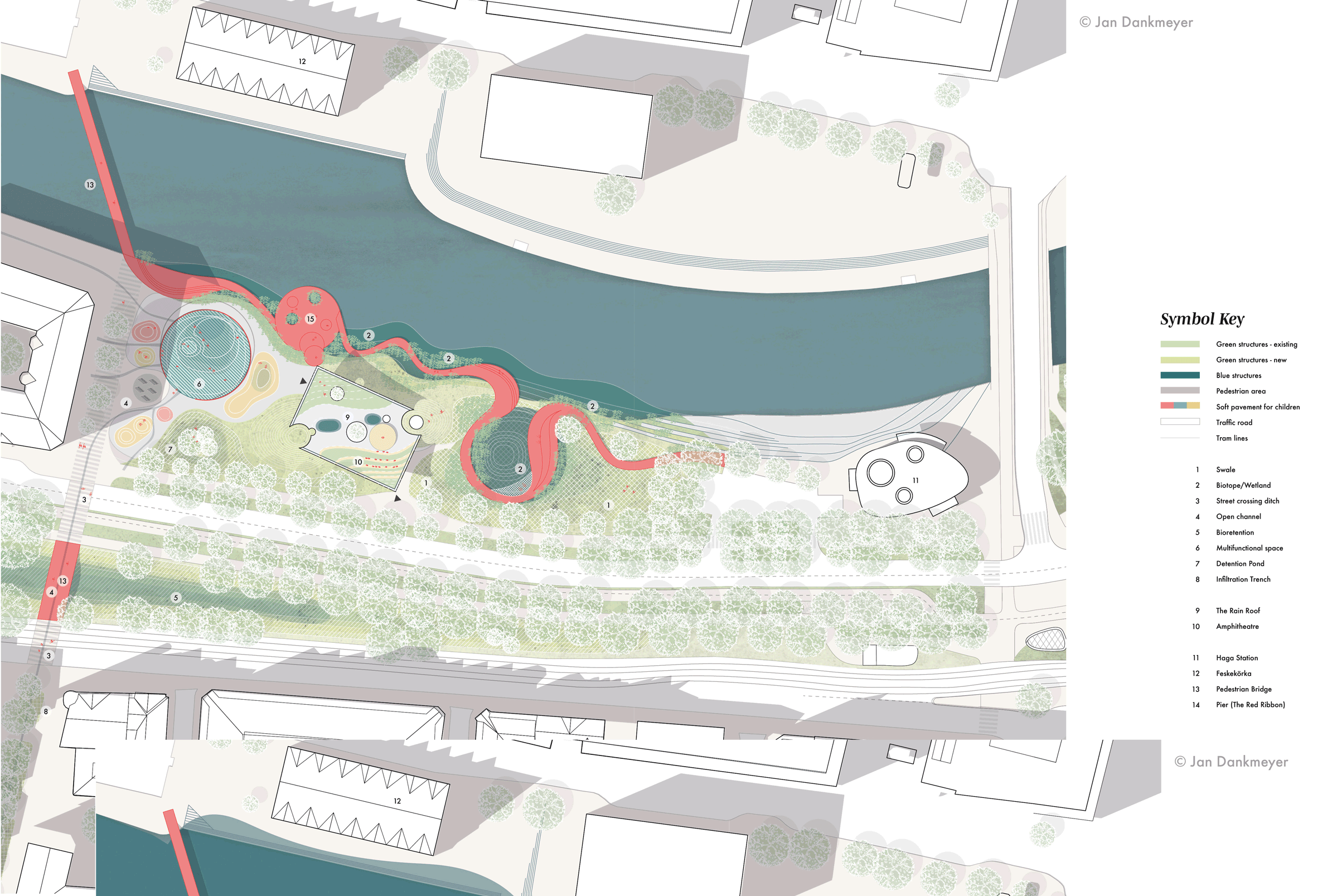
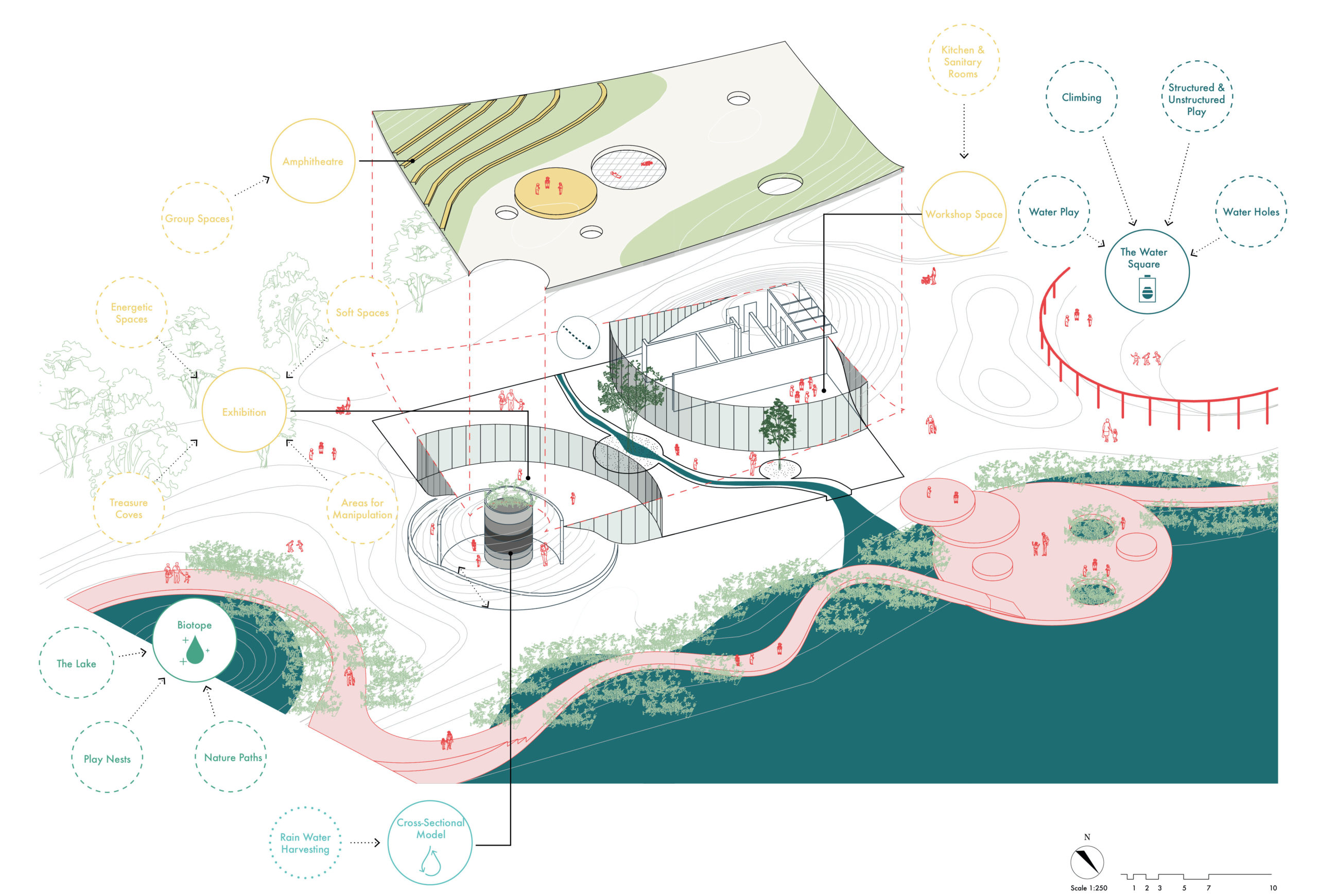
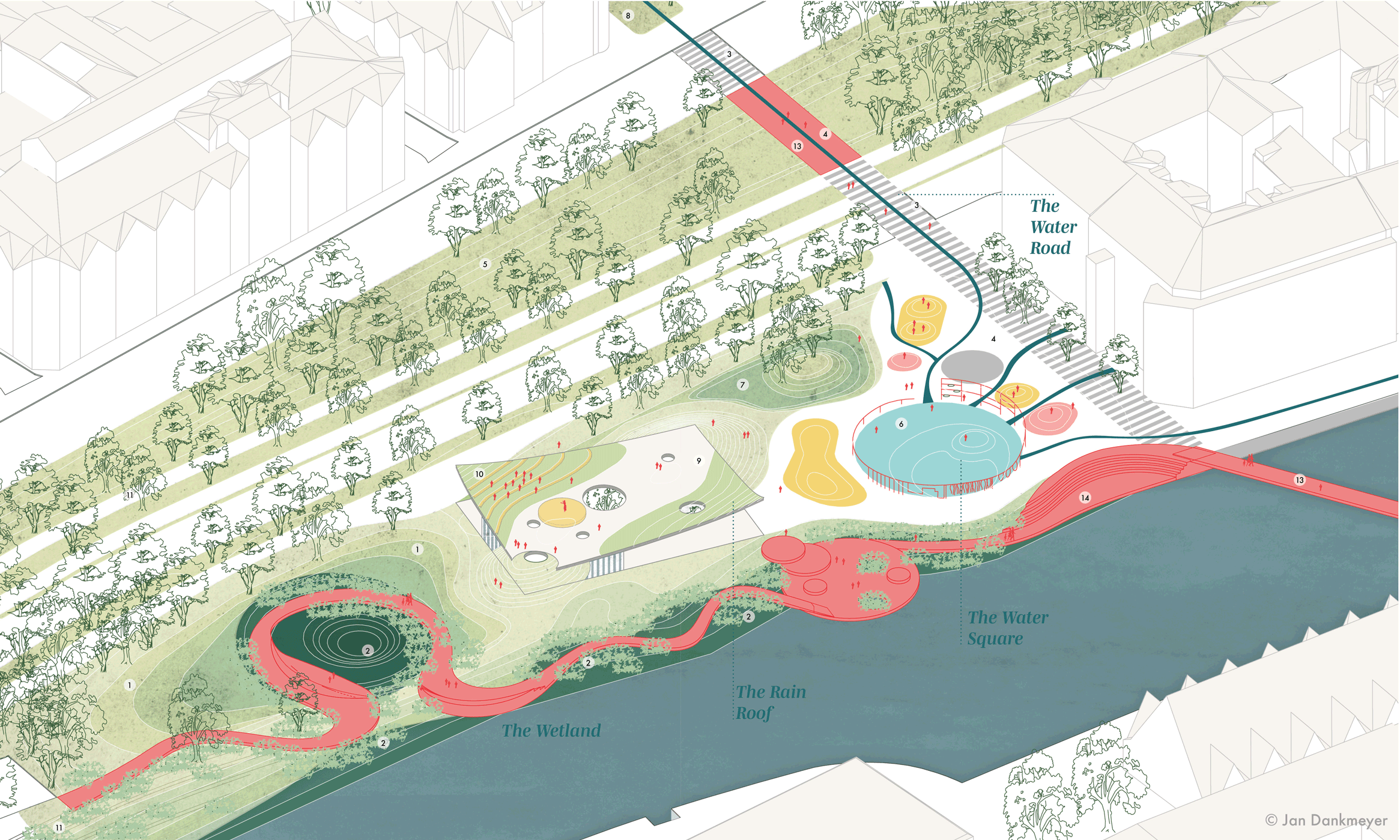

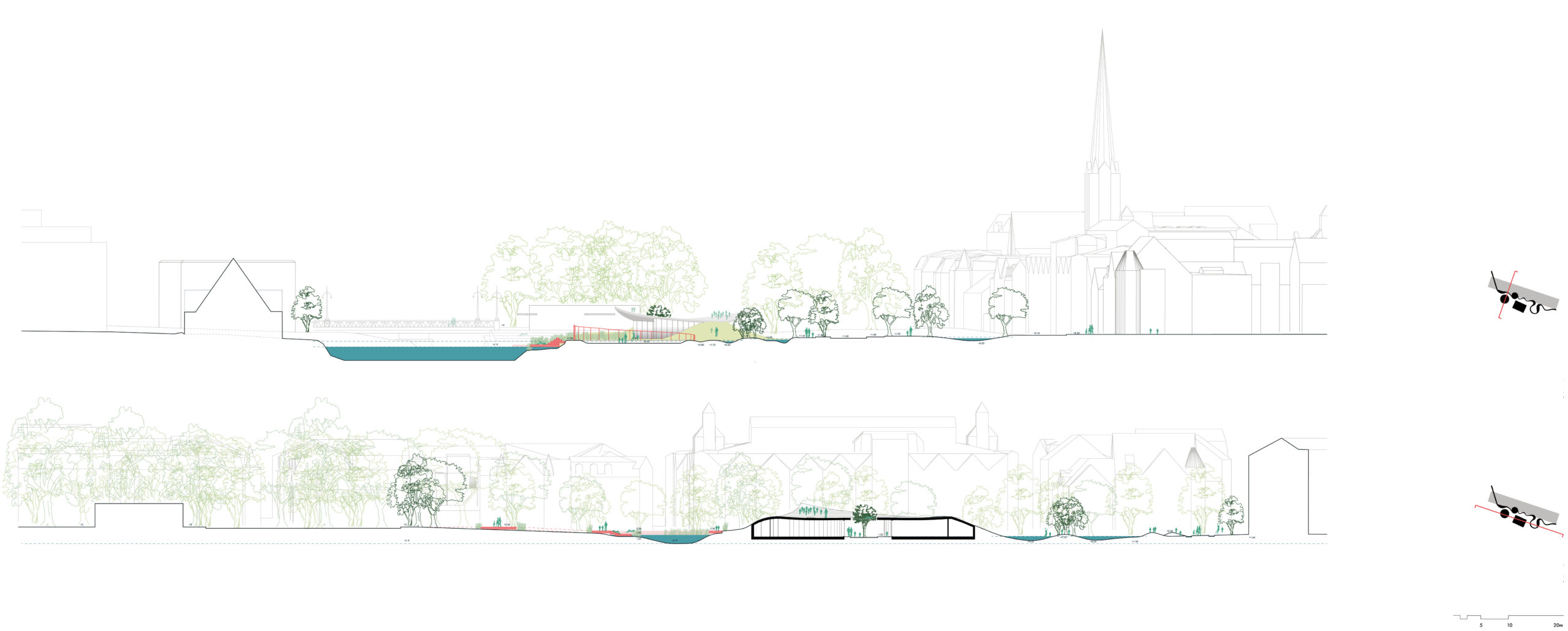

Normal condition – flooded condition
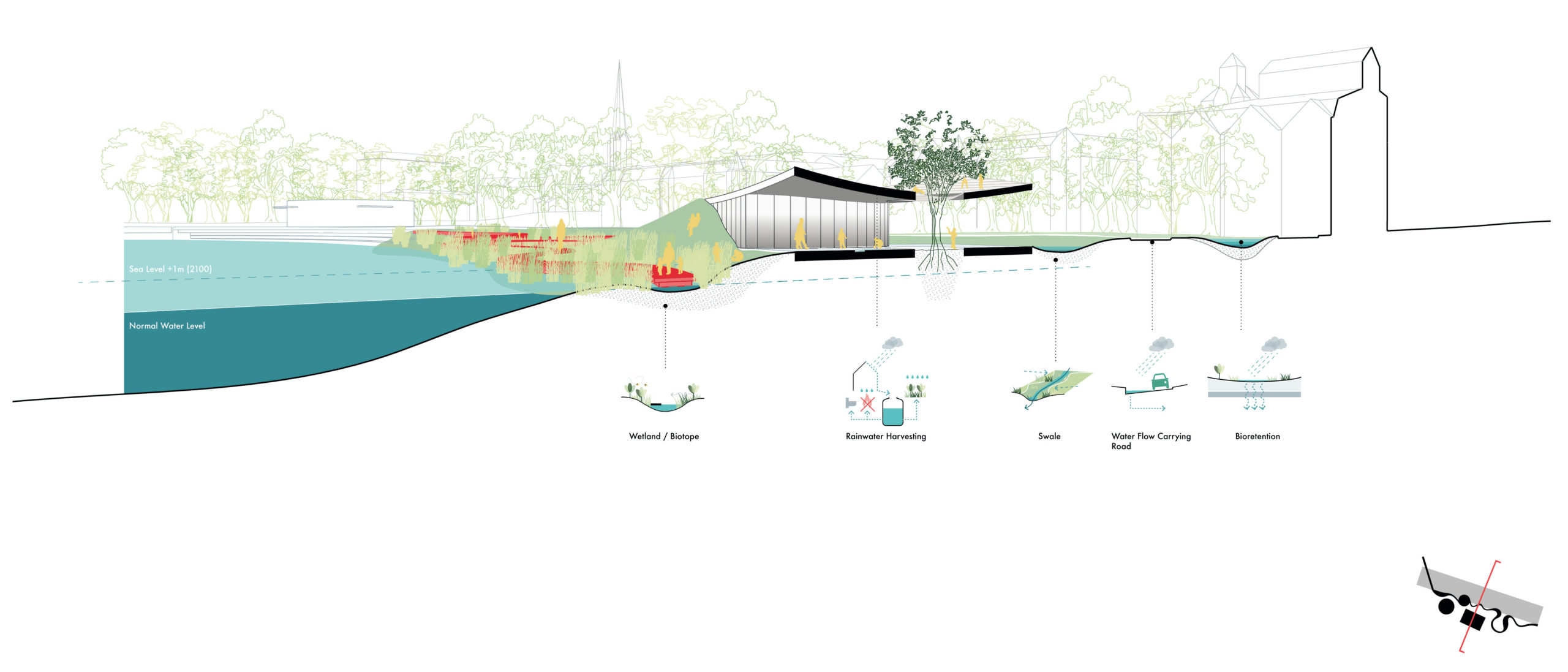
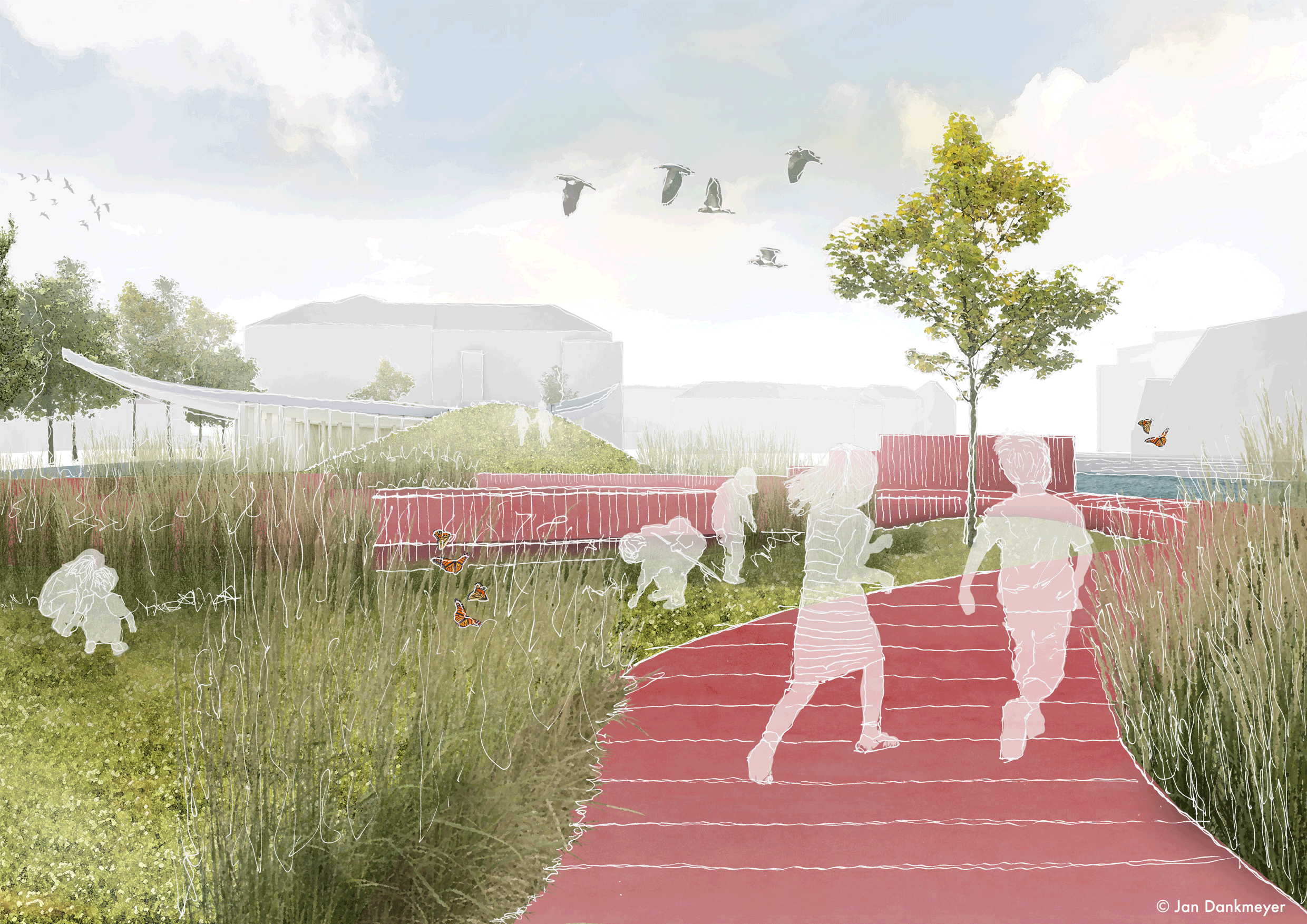
Normal condition – flooded condition